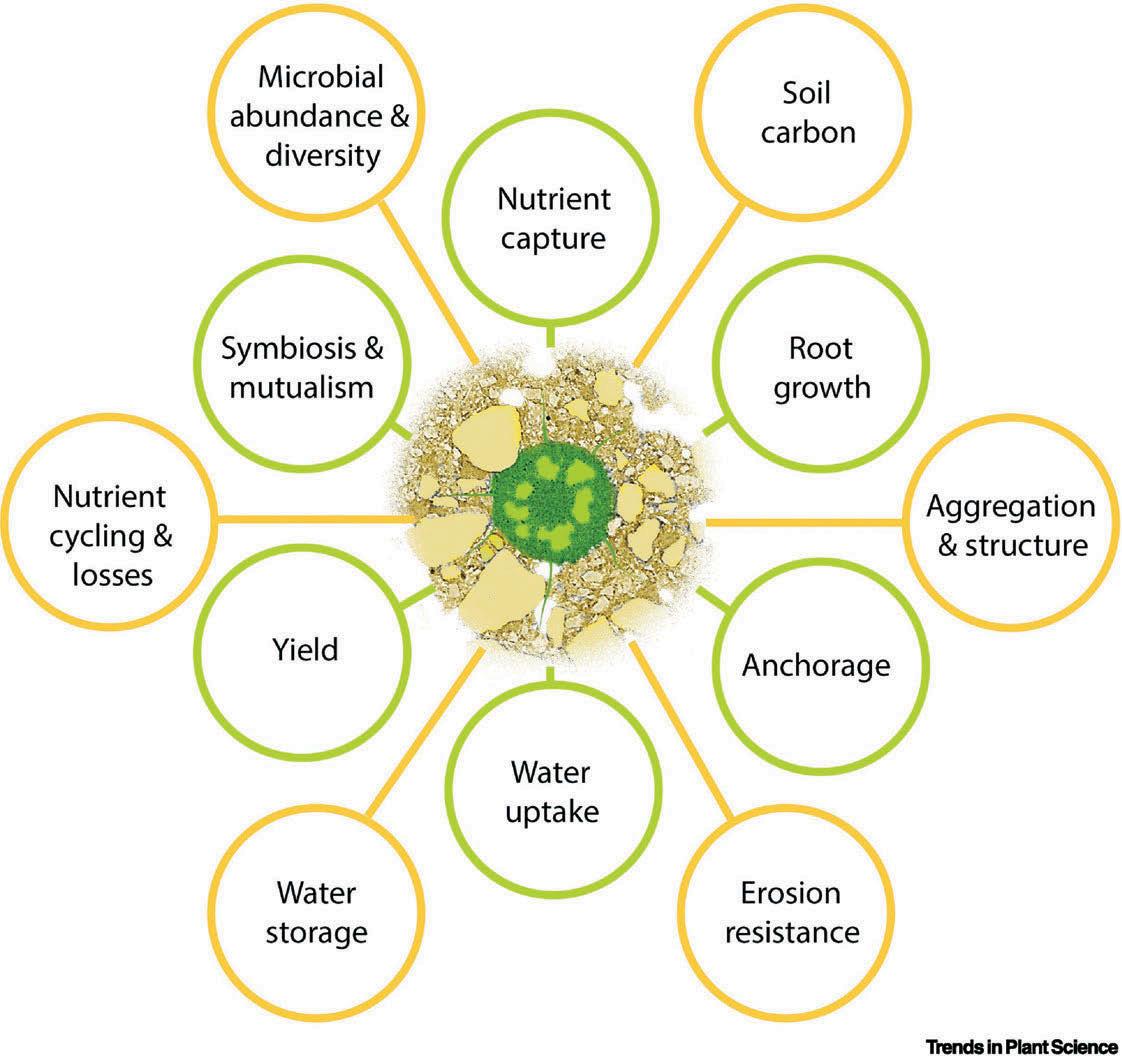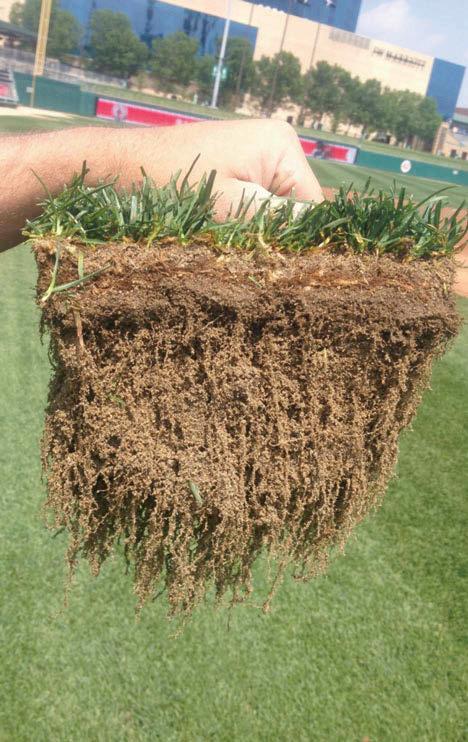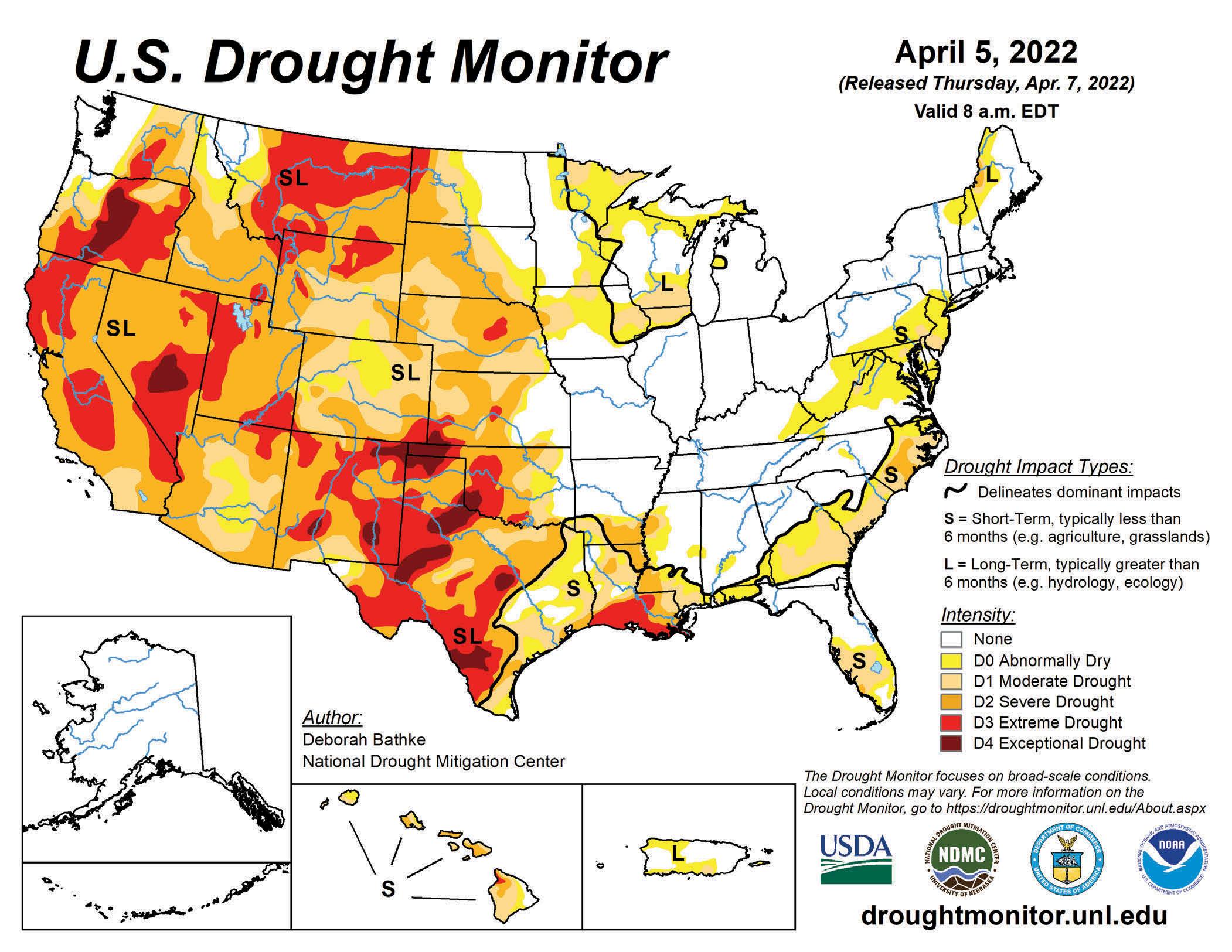
7 minute read
Rooted in Research—Plants as Architects of Soil
by TPIturfnews
ROOTED IN RESEARCH
PLANTS AS ARCHITECTS OF SOIL
By Cale A. Bigelow, PhD
Here we are again for another exciting installment of “Rooted in Research.” At this time “Spring should have sprung” for much of the United States and that means a new growing season is upon us. I don't have a crystal ball but as with every year, certainly something exciting and unexpected is likely to happen for turfgrass managers in 2022, it always does.
It is mid-March as I write this article, and for me and my educator colleagues, most of us are taking the final lap on the winter continuing education/conference season. I have to admit it was really nice to get back out and talk in person with turfgrass managers and producers in all manner of Covid-safe educational environments. More importantly, it was a pleasure to hear from so many of you and think about what kinds of issues are on your mind for the upcoming season.
For those of us working in “The Ivory Tower” of the University I can honestly say my research program is invested in your input since it helps us give some “research with purpose” toward some of our more practical research studies. Thank you for your input! Side note: A shameless plug for the Purdue Turf and Landscape Field Day which will be held on Tuesday 26 July at our W.H. Daniel Turfgrass Research Center in West Lafayette, IN. Event information can be found at www.mrtf.org.
Now on to the good stuff from the world of research. So let’s roll up our sleeves and “Get Down and Dirty” and dig into some fact-based information. I came across a personally fascinating review article “Building soil sustainability from root-soil interface traits” recently published in the Journal-Trends in Plant Science in February 2022: https://doi.org/10.1016/j. tplants.2022.01.010. It is authored by a team of plant-soil science colleagues located in The United Kingdom and led by Dr. Paul Hallett. Dr. Hallett is a well-respected soil physicist at The University of Aberdeen and has a strong interest in plant-soil-root interactions, the relationship between soil microorganisms and the rhizosphere and how all of these factors may affect the physical behavior of soils.
For this review article, he and his colleagues describe plants as “Architects of soil” and highlight their capacity to “build soils.” They review numerous research examples and encourage plant breeders to consider providing more attention to below-ground plant traits, in particular roots (e.g., root hairs, etc.). They outline and suggest selecting/ breeding plants not only for high yield but also for more robust root systems, especially seeking plants with an abundance of root-hairs. Why? because root-hairs can influence soil properties in numerous ways (Figure 1).
The main benefit is the impact of roots on soil structure and the capacity of roots to restructure/improve soil. Now this fact really caught my attention because for those of us managing turfgrass systems we are often

Figure 1. From the review article - How root surface traits influence soil properties.
tasked with growing turfgrass on soils that are highly disturbed, compacted, and/or lack soil structure with an impoverished nutrient condition. Now before I get too deep into the meat of this article, I should review some important terminology the authors define so that you might have a better understanding with regard to all that is happening in the rootzone/soil.
TERMINOLOGY
Rhizosphere: “soil at the interface of plant roots that has been influenced by rhizodeposits.” The rhizosphere is important because nearly all resources captured by a plant from soil enter by passing through the rhizosphere. Root hairs: “Single cell outgrowths from the root epidermis that increase root surface area and soil exploration.” Rhizodeposits: “a collective term for all materials exchanged from the plant to soil, dominated by root exudates, mucilage, and sloughed cells.” Exudates: “substances secreted by roots, composed of a mix of sugars, amino acids, organic acids, and other organic (carbon) compounds.” Mucilage: “viscous polysaccharide-rich (sugar) compounds secreted at the root tip.” Mucilage is important because it helps to lubricate soil particles as the root pushes though hostile and abrasive soil environments. The sugars are a significant food-source for soil microorganisms. Rhizosheath: “the soil that adheres strongly to the root through the action of root hairs and rhizodeposits.” The plant species that were first noticed to have rhizosheaths were desert grasses that survived in extremely poor soils with low organic matter (Price, 1911). Now that you are acquainted with these terms, let’s discuss how some of this relates to soil properties and ultimately healthy soil. First, anyone that cultivates a turfgrass knows that compared to many other plants one of the major benefits of cultivating turfgrass is that as it matures it forms a dense, fibrous root system (Figure 2). A mature, healthy turfgrass root-system has a significant effect on mitigating soil erosion and I highlighted research documenting this fact in a prior Rooted in Research article (Turf News September/ October 2021, pages 34-35) where I reviewed a University of Wisconsin research study comparing the runoff from turfgrass and prairie vegetation (Steinke et al., 2007). With respect to the Hallett et Figure 2. A tall fescue plant al. review article, these authors grown in a sandy soil-notice the dense, fibrous root system. not only mention dense roots but focus on the impact of plant root hairs. In one analogy they use the following language to describe the benefits of root hairs: “Just as dabbing paint with a brush allows it to penetrate into nooks and crannies on surfaces, root hairs can aid the influence of plant roots by penetrating into soil pores too small for roots and distributing rhizodeposits into a greater soil volume. This creates the adhered soil that makes up the rhizosheath, which is postulated to be a major process that aggregates carbon and makes it less subject to microbial decomposition (Rasse et al., 2005).” In other words, it is thought that these root hairs are not only helping the plant access localized resources (e.g., water/nutrients) from small pore spaces, but they also help increase soil carbon deposits (e.g., exudates, mucilage deposits) and this ultimately improves the soil environment (e.g., cementing soil particles, improving soil structure, etc.). In summary, one of the key take-aways from this article is the fact that plants appear to make important resource allocation decisions! Plants invest in improving their soil conditions at the soil-root interface and do what they can to buffer themselves against hostile environments. Root hairs and rhizodeposits are genetic traits and vary by plant species and genotype. Targeting these traits for future breeding efforts could provide significant benefits to both plants and soil. For example, plants with more root hairs are likely to have increased rhizodeposits. This results in: more soil carbon storage (possibly helping mitigate greenhouse gases), improved soil health (e.g. increased sugar deposits/mucilage = better structure), better structure equals more capacity to trap/retain water (e.g. improved drought/heat stress), denser root systems have more surface area resulting in improved nutrient acquisition, and dense roots limit soil erosion. Of course, there is a lot more to read in the article, but I hopefully at least piqued your interest in Rhizosphere Ecology. This area of research is an important scientific frontier and worth understanding as we seek more sustainable plant systems. So, with that, be well and I look forward to hearing about all your successes for the 2022 growing season.

References:
Hallett, P.D., M. Marin, G.D. Bending, T.S. George, C.D. Collins and W. Otten. 2022. Building soil sustainability from root-soil interface traits. Trends in Plant Sci. https://doi.org/10.1016/j.tplants.2022.01.010 Price, S.R. 1911. The roots of some north African desert-grasses. New Phytologist 10:328-340. Rasse, D.P. et al. 2005. Is soil carbon mostly root carbon? Mechanisms for a specific stabilization. Plant Soil 269:341-356. Steinke, K., J.C. Stier, W.R. Kussow and A. Thompson. 2007. Prairie and turfgrass buffer strips for controlling runoff from paved surfaces” and published in the Journal of Environmental Quality 36:426-439. Cale Bigelow, PhD, is a professor of Turfgrass Science and Ecology in the Department of Horticulture and Landscape Architecture at Purdue University in Indiana. Mike Fidanza, PhD, is a professor of Plant and Soil Science at Pennsylvania State University, Berks Campus. They are teaming to provide a Rooted in Research article or each issue of Turf News. All photos and graphics courtesy of Cale Bigelow, PhD.
WEATHER WATCH

A current weekly Drought Summary Map, like the one above, with updated information is posted each week with the most recent map available at the link that follows. https://droughtmonitor.unl.edu/CurrentMap.aspx For local details and impacts, please contact your State Climatologist at the American Association of State Climatologists (https://stateclimate.org/) or your Regional Climate Center of the National Oceanic and Atmospheric Administration (NOAA) (https://www.ncdc.noaa.gov/customer-support/partnerships/regional-climate-centers) Another resource for sod producers is the Crop Condition and Soil Moisture Analytics (Crop-CASMA), a web-based tool to help visualize soil moisture and crop vegetation conditions. It was designed and developed by the National Agricultural Statistics Service (NASS) in collaboration with the U.S. National Aeronautics and Space Administration (NASA) and the George Mason University (GMU) Center for Spatial Information Science and Systems. This tool is free to the public and available at: https://cloud.csiss.gmu.edu/Crop-CASMA/. Crop-CASMA is not available for print because it is a web-based cloud image that constantly changes.










